(submitted by Bruce Myers) As I am sure most automobile enthusiasts will agree, some of the most interesting discoveries are those which are completely unexpected. I encounter many such sights, especially when cruising the rural backroads of NC where my wife Patricia and I currently reside.
While on a recent trip to Jacksonville FL to visit family members, on a Saturday morning we decided to stop by to check out the nearby Brumos Collection. (https://www.thebrumoscollection.com/).
The collection is based upon their storied racing heritage, beginning with some impressive late 19th to early 20th century open cockpit racers (“forerunners”) with names like Peugeot and Miller,
and capping it off with their prodigious stable of their more current “frontrunners” (e.g., Porsche 9xx variants) bearing their iconic “59” racing number.
Upon entry into the facility (a likeness of a Ford assembly plant), the very knowledgeable greeters are quick to point out that the cars are kept in running condition by on-site mechanics in their own workshop. Oil drip pans under the vehicles reinforce this reality.
So, while marveling at “all things racing”, an unexpected sight loomed ahead. Sitting beyond the glitz and glamor of the collection, peeking out from inside the workshop area: a very rough looking 1915 Packard “twin six” 1-35 (7-passenger touring)! My experience mostly begins with post-WW2 automobiles, so I must admit that my interest (and knowledge) of this era of automobile history is, to put it mildly, inadequate. However, this relic of the past caught me off guard and completely took me in.
It had a ghost-like appearance, the old gal just sitting there, begging for some much needed attention like a dateless attendee at a high school dance. The headlights offered signs of an intense Betty Davis eyes-like stare, almost reflecting upon prior days of glory.
Being impossible to ignore “Betty” (my reference), I began taking photos and chatted with the docents to seek whatever information I could: where was it from, and why is it here among their racing collection? At some point in its 120 year lifetime the Packard was pulled from a mud pit, which given its condition seemed about right. Regarding why: from what I can tell, rescuing automobiles is an important mission for the Brumos team, and the presence of this remarkable time capsule reinforces this concept.
Endeavoring to uncover more of its past, some digging led me to Gooding & Co (Amelia Island), the auction house where the Brumos Collection acquired it in 2019. Their auction catalog was able to provide some comments on the Packard’s history: The vehicle was originally owned by Andrew Anthony Kramer of Kansas City, KS. Born in 1867, he was an inventor and founder of the Columbian Steel Tank Co.
In 1917 the Packard was damaged, falling when being lifted into a paint and trim shop. Mr. Kramer then had the car rebuilt by the Packard factory. During this rebuild, the original twin-six engine was replaced with a more current second-series engine, offered by Packard for the 1917 model year. Following the rebuild, for several years Mr. Kramer used the car to proudly escort VIPs around his factory grounds in this smooth running, luxurious vehicle.
For now, let’s put Betty’s story on hold and delve into how the Twin Six came about.
Developing the Twin Six. In May 1915, Packard first introduced their uniquely designed V-12 engine for passenger cars, the first of its kind to be mass produced. Known for its innovation, Packard found ways to stay ahead, especially with new engine designs arriving such as Cadillac’s V-8 in 1914. So why not a V-12?
Bringing this new powerplant to life was chief engineer Jesse G. Vincent who joined Packard in July, 1912. His background included working at the Burroughs Adding Machine Co, where he managed to accumulate “a thick portfolio of patents” and maintained the Burroughs fleet of executive cars in Detroit. He then moved on to the Hudson Motor Car Company, occupying the position as acting chief engineer. Alvan Macauley arrived at Packard as General Manager in 1910, and having known Vincent from his past Burroughs connection, convinced him to join Packard.
Regarding the design of the Packard Twin, Vincent believed that casting (2) inline sixes to create a 60-degree V-12 configuration would work well with a road car: compactness, power, and smoothness: “A six-cylinder motor is theoretically in absolutely perfect balance,” he wrote. “This is because the vibratory forces due to the rise and fall of one piston are neutralized by equal and opposite forces due to another.”The new engine performed just as Vincent had hoped, and both he and Packard’s then president Henry B. Joy were confident they had hit upon a winning formula.
Vincent proclaimed that torque was “50 percent better than it would have been with a V-8, and 100 percent better than the Packard Six”. Joy added, “The greatest piece of machinery that ever went upon the highways”. It was reported that the car provided a smooth, steady acceleration from a crawling pace when starting in top gear. Rather impressive considering these vehicles weighed, depending upon the body style and wheelbase, around 4,000 lbs.
WW1 and the Liberty L-12: As was the case for other US automobile companies, Packard shifted from luxury car manufacturing to military production, supplying trucks and other vehicles to the U.S. and Allied forces. In April of 1917 the US declared war upon Germany. An urgency surfaced for an engine that offered a modular design and could be quickly mass-produced to equip US combat aircraft, and Jesse Vincent contributed his skills to aid in the effort.
In May of that year, a federal task force summoned Vincent and Hall-Scott’s Elbert J. Hall to design such an engine with a “time is of the essence” directive. They worked together intensely, emerging with a completed design for the new engine which became known as the Liberty. It is said that this incredible duo managed to complete their design for the engine in less than a week, fulfilling the needs of being configurable with either 4, 6, 8, or 12-cylinders. The L-12 was a SOHC V-12 power plant, displacing 1,649 cu. in. and rated at 400 hp.
The effects of WW1 were felt on the global economies, creating a boom for the US due to our manufacturing capacity positioning us as a primary supplier of goods to support our European allies. Also, employment surged: unemployment dropped from 14% in 1914 to 6% in 1916.
However, by the end of the war, the European economies were in ruins and America’s economic boom quickly faded. Factories began to ramp down production lines in the summer of 1918, leading to job losses. Prior to the Armistice, Packard president Alvan Macauley decided it would be prudent to offer a smaller, cheaper model.
This emerged in September 1920 (for the model year 1921) as the “Single Six” (above), powered by a new 242 cu. in. L-head six with 52 hp. Although the Single Six was a sales disappointment — in part because it still cost a lot more than Cadillac’s V-8 (1915 introduction)— it outsold the costlier Twin Six, whose sales fell from over 5,000 in 1920 to around 1,300 in 1921.
By 1922, it was clear the V-12 engine had run its course, discontinuing it in favor of straight eights in 1924. In 1932, Packard again offered a new V-12, named the “Packard Twelve”, which lasted until 1939. And here is a graph to provide a visual.
Back to our subject car. Recalling the earlier mud pit comment: Between July 9-13th 1951, the Kansas River valley flooded, becoming known as the “Black Friday Flood”. The disaster killed 28 people, 2,500 homes were completely demolished, 336 businesses were destroyed, and more than 3,000 flooded. Mr. Kramer’s Columbian Steel Tank Company factory grounds were inundated with water and mud, including his beloved Packard. Then, according to auction documents it was “cleaned” by the Kramers, however it is not evident of its condition, and whether it was running and drivable.
Around 1963, documents state the car was sold to Bradley Skinner, a Packard enthusiast, collector and expert on the twin-six automobiles. So much so, the “Bradley Skinner Award” was established in 1999 by the Packard Automobile Club (PAC) which awards the best 1915-1923 Twin Six Packard attending their PAC National Meets. Mr. Skinner eventually installed a correct first-series twin-six, bringing it closer to its original condition.
At this point the history trail goes cold up to the 2019 auction, leaving me with several unanswered questions: regarding the aftermath of the 1951 flood, did Mr. Kramer get the Packard running and drivable, or did it sit until 1963 when Bradley Skinner took possession, when he performed the engine swap? I am surprised that under Mr. Skinner’s ownership, the vehicle is in such a state. Perhaps he ran out of steam in his life to restore a vehicle that was so far gone, and it sat somewhere until the 2019 auction, rescued by the Brumos Collection where she now sits.
Much has been written in CC about the Packard company, and I enjoy reading about these and other nameplates that have made their marks in history but eventually succumbed to the forces of market competition. However, until that unexpected encounter with ‘Betty’ in a most unlikely place, sitting amongst racing machines, looking worse for wear I would not have been inspired to learn about the Packard Twin-Six. Glad I did.
Dance, anyone?
Related CC reading:
1937 Packard Six: Prestige On The Installment Plan JP Cavanaugh
1937 Packard Super Eight Richard Wayman
1940 Packard 110 Station Wagon: Lumbering Towards Extinction JP Cavanaugh



















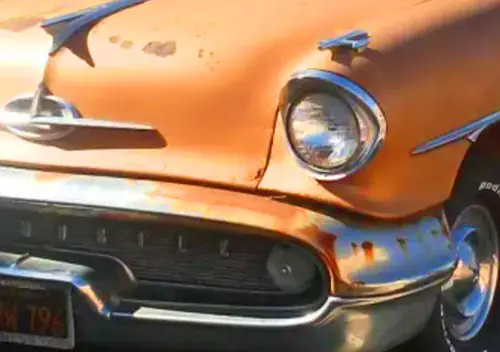
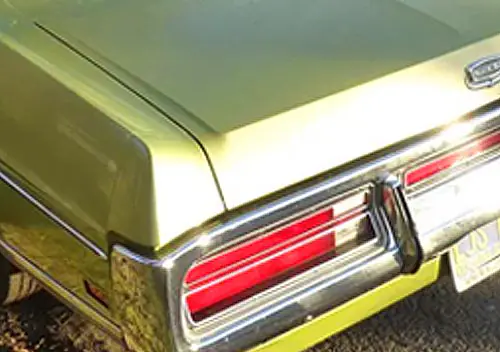





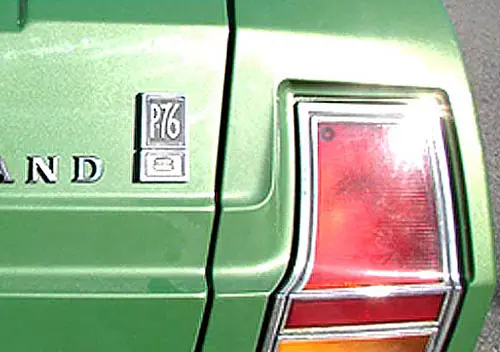



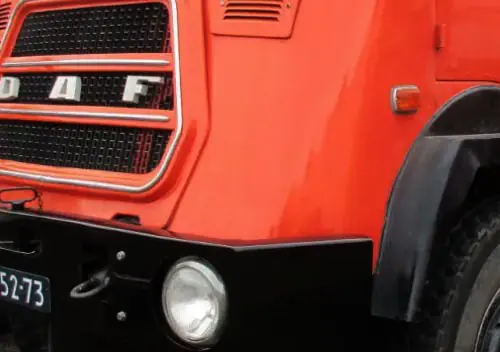
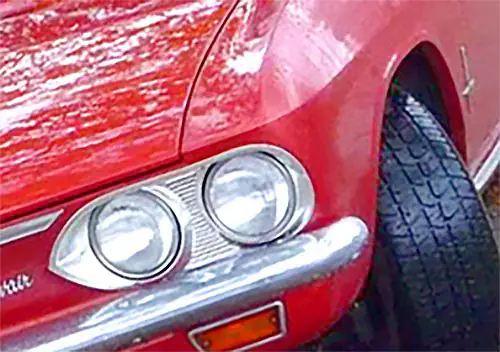


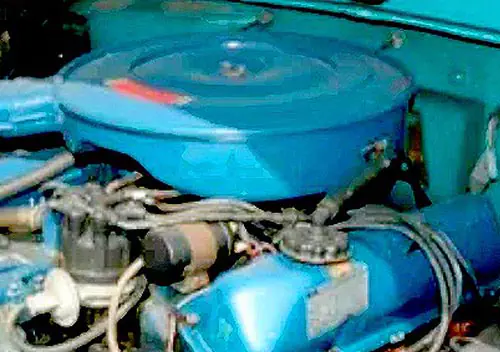



The modern trend to leaving cars with their original patina just might have reached its apotheosis with this flood survivor. It makes a car more interesting to have a story, and this is a terrific story. Then there’s the headlights, which to me make the car seem less intimidating and more of an anachronistic flower child. In any case, I’m glad the owners have largely left it alone.
Headlights look to me like some modern LED sealed-beam retrofits.
Made the same impression on me.
Great write-up and back-story Bruce. Thanks!
Rollfast – Great comments! I learned something as well – I looked up apotheosis – thanks for that! Yes, this is a great story even though it is missing critical data. As far as this car’s condition – it looks to be in very good shape to me. Having been involved with a number of antique truck restorations, I’m used to seeing massive dents, serious rust-outs and frames (and sheet metal) covered with weld. This car doesn’t have any dents! It’s difficult to tell (running board skirts?) but it may not have any rusted holes either. A great car and a great story!
I love the early engineering from these old-timers. And how much things changed over the next 20 years. It is amazing to see a car like this in this condition where the decay seems to have been arrested.
The idea of an integral block and head is hard to wrap my mind around. Thanks for sharing this!!
” integral block and head” had it’s advantages, no blown head gaskets to worry about lol. As mentioned precise machining was a problem though.
All the famed ’20’s Bentleys and Bugattis had monobloc head and blocks.
I’d wager that having the OHC four valves re-ground on the Bentley was limited to mechanics who had also qualified as proctologists.
Having owned several ’50s Packards, I’d have dearly loved to have had one from their “golden era”, the teens and ’20s. Always out of reach and now I’m out of time. Such admirable automobiles, one where it can be truly said that they were built to a standard, not to a price.
A guy I know has a Pierce Arrow, Buffalo NY made, equally magnificent. Never have seen a Peerless closely, just in restored in museums behind velvet ropes. This Twin-Six should remain in it’s present condition to be enjoyed as-is.
Pierce and Peerless made some huge, low-revving straight sixes in the Teens. I know of them only from comparisons with its V8 in a Cadillac history. Perhaps they were also used in trucks.
Nice, I love the detailed back stories .
-Nate
Nice find, recent cyclone Gabriel here dealt to a lot of old cars many ended up auctioned off by insurance companies, however at a recent show was a 28 Buick still with the original family owners that they are still cleaning the silt out of, its a mint complete original car that was buried to the windows in silt, not running yet they hadnt taken the running gear apart yet so not a runner.
A wonderfully researched and written article that captured the moment Packard made its big move against the other two P’s and also Cadillac, which had launched its first V8 only a year earlier. The Liberty engine further elevated the company.
Another famous owner was The Babe, here shown sitting in his 1921 Twin-Six with custom coachwork. Photo courtesy Dammann and Wren’s excellent Crestline book on the marque.
Fascinating find – those headlights are mesmerising. And I really appreciate the education about the first Packard V12. In an era when everything car-related was being invented, including the V8, it still took a sizable amount of gumption to do a twelve. Also very interesting how the fad sort of died out, only to come back with a vengeance in the ’30s.
Great story. I’ll dance.
Those fascinating Bette Davis peepers are the correct ones for a 1915 Twin six, it seems. Never seen ones like it.